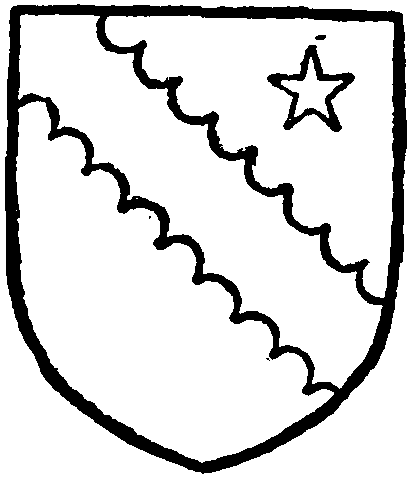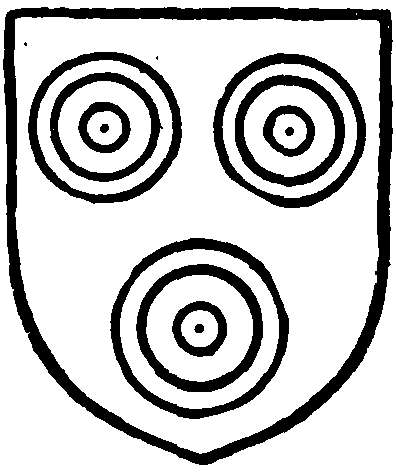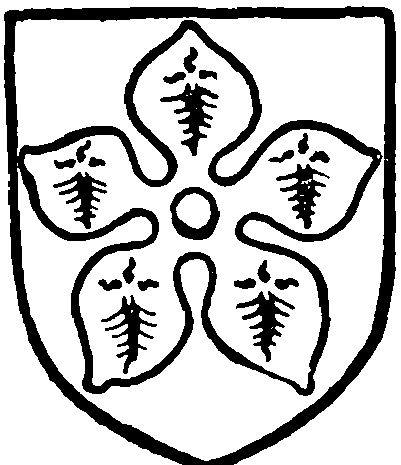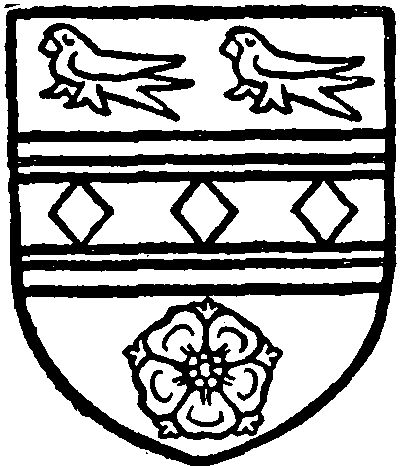A History of the County of Lancaster: Volume 6. Originally published by Victoria County History, London, 1911.
This free content was digitised by double rekeying. All rights reserved.
'Townships: Witton', in A History of the County of Lancaster: Volume 6, ed. William Farrer, J Brownbill (London, 1911), British History Online https://prod.british-history.ac.uk/vch/lancs/vol6/pp263-266 [accessed 31 January 2025].
'Townships: Witton', in A History of the County of Lancaster: Volume 6. Edited by William Farrer, J Brownbill (London, 1911), British History Online, accessed January 31, 2025, https://prod.british-history.ac.uk/vch/lancs/vol6/pp263-266.
"Townships: Witton". A History of the County of Lancaster: Volume 6. Ed. William Farrer, J Brownbill (London, 1911), British History Online. Web. 31 January 2025. https://prod.british-history.ac.uk/vch/lancs/vol6/pp263-266.
In this section
WITTON
The ancient township adjoins the town of Blackburn on the east and is divided from it for some distance by the River Blackwater, a tributary of the River Darwen, over which the township extended and included the district now called Griffin. To the south the boundary passed over the River Darwen, extending as far as the limits of Livesey. From these waters on the south and east and from Arley Brook on the north the land rises some 450 ft. to 500 ft. up the slopes of Billinge Hill to an elevation at the summit of 807 ft. above the ordnance datum, from which in clear weather views may be obtained of Ingleborough and Penyghent in Yorkshire, Black Coombe in Cumberland, the mountains on the coast of North Wales and the Isle of Man. On the south-eastern slope the subsoil consists of the Coal Measures; on the opposite slope of the Millstone Grit. The area of the township is 700 acres, of which 125 acres have been added to the municipal borough and civil parish of Blackburn by the Blackburn Borough Extension Act, 1877, and the Blackburn Corporation Act, 1901. By the Blackburn Corporation Act, 1892, and the Act of 1901 the portions of this township added to the borough were included in the civil parish of Blackburn, (fn. 1) and this township reduced to its present area of 575 acres. (fn. 2) The population of the reduced township in 1901 numbered 237 persons.
About the end of the 18th century more than half of the ancient township was inclosed to form Witton Park. The portion of the township now included in the borough of Blackburn has become very populous; of the remainder more than threefourths consists of meadow and pasture, and nearly one-fourth of woodland (fn. 3) scattered over Witton Park and Billinge Hill. There are a number of large cotton mills at Griffin in the ancient township, but none within the modern area. Witton Stocks, now within the borough of Blackburn, was the site of the town stocks which existed until some time after 1860. The high road from Blackburn to Preston passing through Walton-le-Dale intersects the south-eastern part of the township. Cherry Tree station on the Liverpool, Blackburn and Accrington line of the Lancashire and Yorkshire Railway Company serves the central part of the township, and Mill Hill station on the same line the Griffin district; both are in the adjoining township of Livesey.
The name Griffin applied to that part of Witton lying between Redlam and the River Darwen was derived from a public-house named the 'Griffin's Head' which stood on the high road close to the south-eastern boundary of the township.
Manor
WITTON was a member of the preConquest manor of Billington and was probably included in the feoffment made by Henry de Lacy to Hugh son of Leofwin of sundry manors including 'half Billington' to be held by the service of half a knight's fee. In 1242–3 it doubtless formed part of the fee of half a knight which Adam de Billington, great-nephew of Hugh son of Leofwin, held in Billington with the members. (fn. 4) Some forty years later Avice lady of Billington daughter and heir of Adam enfeoffed Roger her son of all her land and demesne in the town of Witton with 4 oxgangs of land to hold by a yearly rent of 12d. at the feast of St. Giles (fn. 5); but the lordship descended at her death before 1288 to her eldest son Adam de Billington. Before Easter 1288 Adam de Billington gave the manor to Geoffrey de Chadderton, who answered in 1302, at the collection of the aid for marrying the king's eldest daughter, for the eighth part of a knight's fee which he held of the Earl of Lincoln in Witton. (fn. 6)
At the death of the earl in 1311 Richard son of Geoffrey de Chadderton was returned as holding a plough-land here by the service of the eighth part of a knight and 2s. rent at Midsummer; but in 1323 his brother William had succeeded and in December paid a fine for respite of his suit at the baronial court of Clitheroe, doubtless in respect of this manor. (fn. 7) William de Chadderton died 10 May 1333, Geoffrey his son being then but a few months old. For twenty years until Michaelmas 1353 Geoffrey was the ward of Richard de Fiton and Margaret his wife. (fn. 8) In 1330 as the heir of William de Chadderton he was returned as holding of Henry Earl of Lancaster in demesne and service a plough-land in Witton where eight ploughlands make a knight's fee. (fn. 9) He died early in 1357, leaving an only daughter Margery as his heir, who the same year instituted proceedings against Richard and Margaret Fiton for making waste, sale and destruction of woods and gardens in Witton which they had in custody of her inheritance. (fn. 10) Margery married John de Radcliffe, who died in 1407 seised of the manor, which he held in chief by the twentieth part of a knight's fee and 2s. rent. (fn. 11)
Richard Radcliffe of Chadderton, great-grandson of John, left issue at his death three daughters, of whom Margery, the second, married Ralph Standish of Standish, and carried the manor into that family. (fn. 12) In 1680 Edward Standish and Elizabeth his wife passed the manor with a small landed estate and 2s. of rent to Thomas Greenfield, from whom it descended to his daughter Martha, the wife of the Rev. John Holme, vicar of Blackburn 1706–1738. The Rev. John Holme, son of the last-named, passed the manor in 1742 to trustees, probably for sale, (fn. 13) but no evidence of the further descent of the manor has been found.

Radcliffe of Chadderton. Argent a bend engrailed sable, in chief a mullet for difference.

Standish of Standish. Sable three standing dishes argent.
WITTON HALL.—In the time of Edward I Adam son of Adam de Billington granted to Adam son of Adam de Haldeley part of his estate here, and other lands formerly held by Richard son of John de Witton, to hold of Henry de Lacy Earl of Lincoln, paying 1d. yearly for castle ward to the earl and 2s. to the grantor. Adam de Haldeley held this land at the earl's death in 1311 for 1d. and suit at the court of Clitheroe. (fn. 14) In 1322 he gave this estate to Adam son of Richard de Radcliffe, (fn. 15) rector of Bury (1331–67), and the latter gave it about 1330 to his nephew Adam son of William de Radcliffe, who enfeoffed Robert son of Roger de Radcliffe for term of his life in 1332. (fn. 16) In 1340 Adam de Radcliffe held a messuage and a plough-land here of Queen Isabella by knight's service and 5d. for castle-ward rent. (fn. 17) In 1345 he was outlawed for felony at Lancaster for burning the houses of John de Pudsay, but, anticipating trouble, had previously enfeoffed the vicars of Whalley and Blackburn of his estate here, and they, obtaining the royal assent, alienated it in 1347 to the Abbot and convent of Whalley, together with lands acquired from John son of Adam de Ireland. (fn. 18)
The demesne of Witton thus passed into the hands of the monks of Whalley, and there continued until the dissolution of the house. It was sold to Richard Crombilholme of Dutton, yeoman, on 20 May 1544, together with other possessions of the house, and he conveyed it four days later to George Astley of Stakes, gent., and William his son, (fn. 19) in whose line it continued at least as late as the latter part of the 17th century, and possibly until the Rev. George Astley dispersed the family estates early in the reign of George III. (fn. 20) Witton Hall was acquired by Joseph Feilden of Blackburn, who paid land tax in 1788 amounting to £4 10s. 2½d. out of £11 10s. charged upon the township. (fn. 21) It is probable that he also acquired the manor from the Holme family. His predecessors are said to have commenced purchasing lands here in 1690. Samuel Bower of Highgrave also acquired numerous messuages here in the latter part of the 18th century, which are said to have been sold after his death in 1793 to Mr. Henry Feilden of Witton. (fn. 22) James Hawley Gilbert Feilden of Witton Park, late captain in the King's Royal Rifle Corps, fourth in descent from Mr. Joseph Feilden, is the present owner of the Witton estates and reputed to be lord of the manor.

Astley. Azure a cinquefoil pierced ermine.

Feilden of Witton. Argent on a fesse cotised azure between two martlets in chief sable and in base a rose gules three lozenges or.
Richard son of Richard de Holden gave his tenements in Witton to trustees before 1387. (fn. 23) COO HILL was the property of Richard Holden in 1444. He had issue Henry, father of Thomas, who was in possession in 1514. Thomas Holden, who died in 1591 seised of 'Coohyll' and other estates, was the father of another Thomas, who died so seised in 1617, holding the estate of Ralph Standish for 12d. rent. Thomas his son was a freeholder here in 1650, (fn. 24) and Mr. Francis Holden in 1666 was the only person who paid tax on more than two hearths. (fn. 25)
Christopher Marsden died in 1605 seised of three messuages in Witton held of Ralph Standish by the rent of a glove, Miles his son being aged fifteen years. Miles Marsden was in possession of Redlam in 1622, and Christopher Marsden paid 4½d. wapentake rent in 1662 for 'Redlome.' (fn. 26)
Thomas Cowburne had an estate here at the beginning of the 15th century, which was settled in 1404 upon his relict Cecily, then the wife of Thomas Livesey of Feniscowles, with remainder to her son Thomas Cowburne, who was living in 1427. (fn. 27) Henry, living in the time of Henry VIII, was father of John, who was possessed of THE EYES, in Witton, in 1557. George son and heir of John Cowburne, gent., passed by fine in 1583 to Lawrence Duxbury of Great Harwood, gent., messuages called 'Le Eyes' and Todehole, in Witton and Livesey. Lawrence Duxbury died in 1619, leaving Nicholas his son and heir, aged thirty-seven (fn. 28) years, who held a messuage here at his death, in 1628, of Ralph Standish by the yearly rent of a pair of gloves. (fn. 29) The Eyes was in the possession of Lawrence Duxbury of Dean in 1660.
The ecclesiastical parish of St. Mark, formed in 1842 as a district chapelry in Blackburn ancient parish, consists of the ancient township of Witton and parts of Blackburn township. (fn. 30) The church, standing on the hill-side above the River Blackwater, and on the edge of Witton Park, was erected in 1836–7 (fn. 31); the mortuary chapel of the Feilden family was added in 1870, and the church restored and enlarged in 1881–7. The registers date from the year 1838. The living is a vicarage in the gift of the vicar of Blackburn. The church of St. Philip, Griffin, was built in 1880, (fn. 32) at which date the registers commence. The living is a vicarage in the gift of five trustees.
The Nonconformist places of worship are mentioned in the account of Blackburn.
